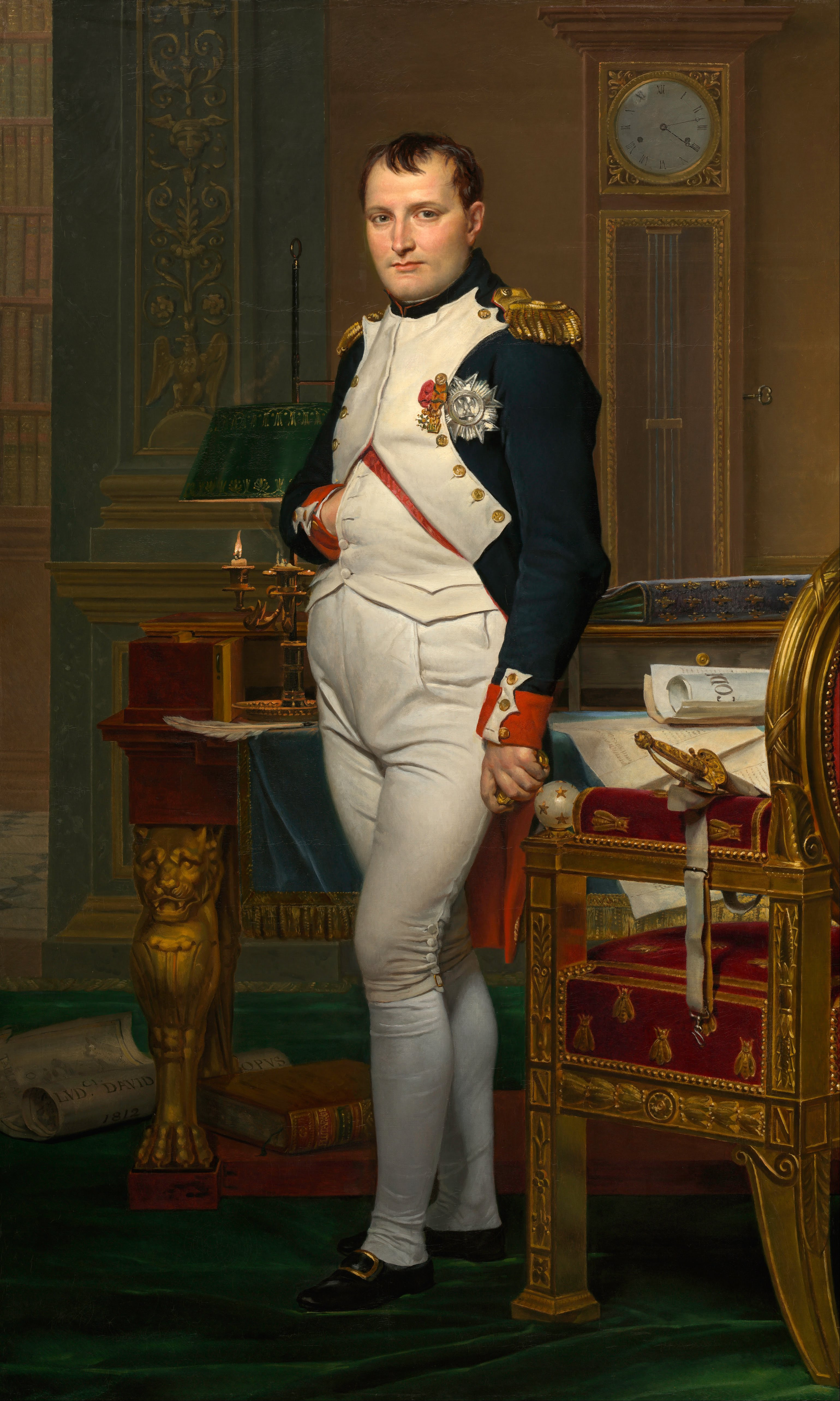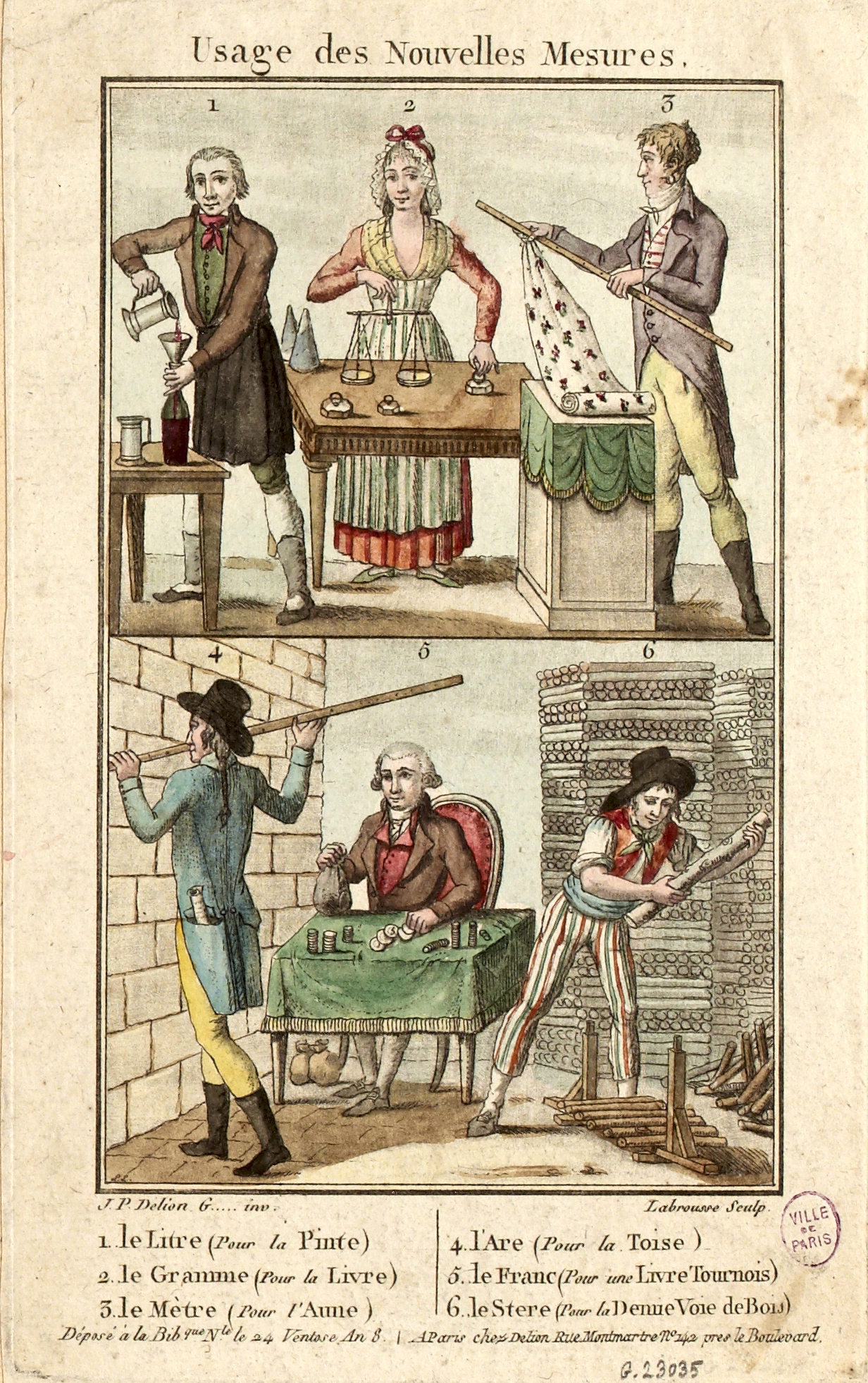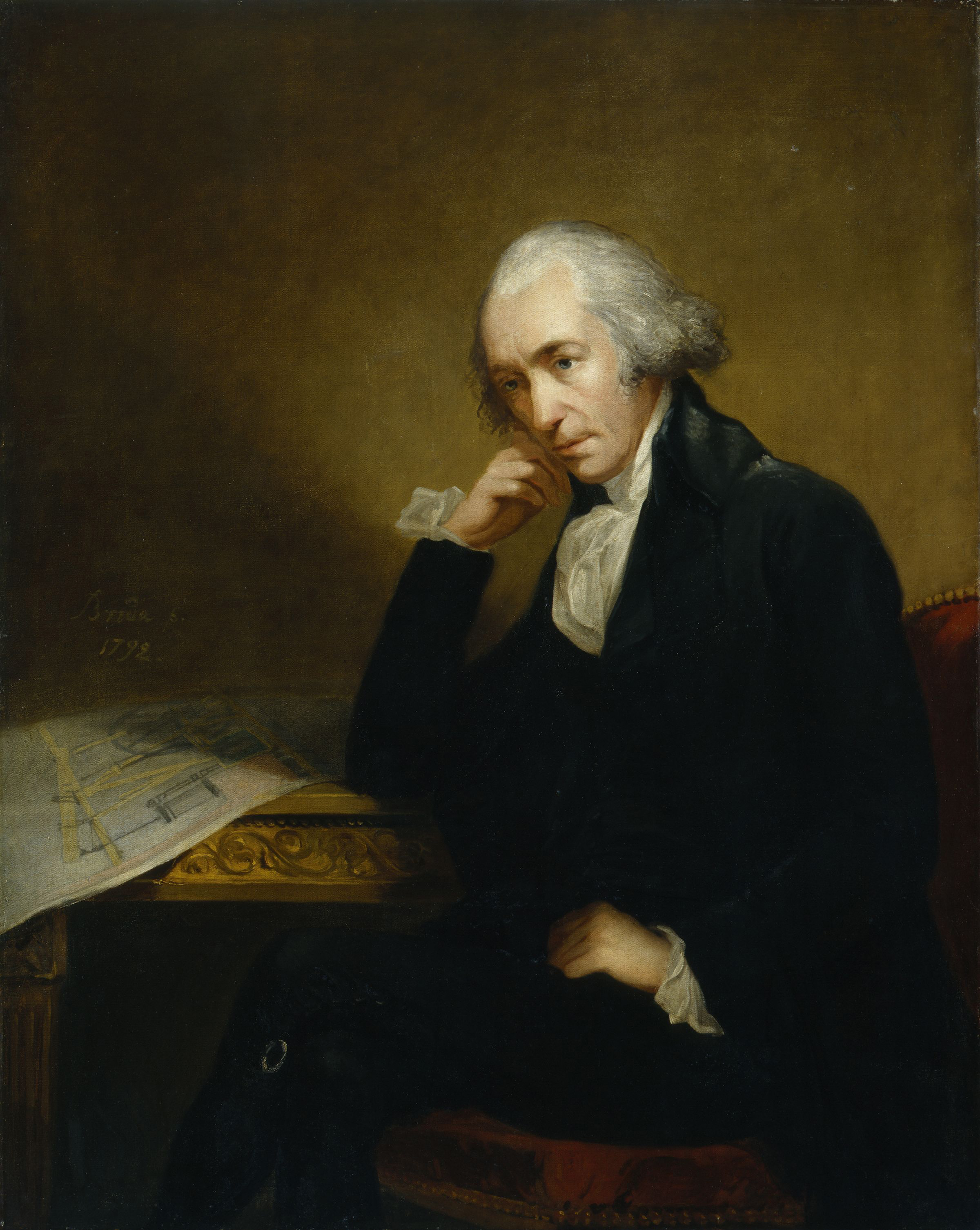|
Mesures Usuelles
(, ''customary measures'') were a French system of measurement introduced by French Emperor Napoleon I in 1812 to act as compromise between the metric system and traditional measurements. The system was restricted to use in the retail industry and continued in use until 1840, when the laws of measurement from 1795 and 1799 were reinstituted. Rationale behind the new system In the five years immediately before the French First Republic introduced the metric system, every effort was made to make the citizens aware of the upcoming changes and to prepare them for it. The administration distributed tens of thousands of educational pamphlets, private enterprise produced educational games, guides, almanacs, and conversion aids, and metre standards were built into the walls of prominent buildings around Paris. The introduction was phased by district over the next few years, with Paris being the first district to change. The government also realised that the people would need metre rul ... [...More Info...] [...Related Items...] OR: [Wikipedia] [Google] [Baidu] [Amazon] |
French Units Of Measurement
200px, Table of the measuring units used in the 17th century at region of southeastern France France has a unique history of Unit of measurement, units of measurement due to its radical decision to invent and adopt the metric system after the French Revolution. In the Ancien régime and until 1795, France used a system of measures that had many of the characteristics of the modern Imperial System of units but with no unified system. There was widespread abuse of the king's standards, to the extent that the ''lieue'' could vary from 3.268 km in Beauce to 5.849 km in Provence. During the revolutionary era and motivated in part by the inhomogeneity of the old system, France switched to the first version of the metric system. This system was not well received by the public, and between 1812 and 1837, the country used the '' mesures usuelles'' – traditional names were restored, but the corresponding quantities were based on metric units: for example, the ''livre'' (poun ... [...More Info...] [...Related Items...] OR: [Wikipedia] [Google] [Baidu] [Amazon] |
Louis Philippe I
Louis Philippe I (6 October 1773 – 26 August 1850), nicknamed the Citizen King, was King of the French from 1830 to 1848, the penultimate monarch of France, and the last French monarch to bear the title "King". He abdicated from his throne during the French Revolution of 1848, which led to the foundation of the French Second Republic. Louis Philippe was the eldest son of Louis Philippe II, Duke of Orléans (later known as Philippe Égalité). As Duke of Chartres, the younger Louis Philippe distinguished himself commanding troops during the French Revolutionary Wars and was promoted to lieutenant general by the age of 19 but broke with the First French Republic over its decision to execute King Louis XVI. He fled to Switzerland in 1793 after being connected with a plot to restore France's monarchy. His father fell under suspicion and was executed during the Reign of Terror. Louis Philippe remained in exile for 21 years until the Bourbon Restoration in France, Bourbon Restor ... [...More Info...] [...Related Items...] OR: [Wikipedia] [Google] [Baidu] [Amazon] |
Metric System
The metric system is a system of measurement that standardization, standardizes a set of base units and a nomenclature for describing relatively large and small quantities via decimal-based multiplicative unit prefixes. Though the rules governing the metric system have changed over time, the modern definition, the International System of Units (SI), defines the metric prefixes and seven base units: metre (m), kilogram (kg), second (s), ampere (A), kelvin (K), Mole (unit), mole (mol), and candela (cd). An SI derived unit is a named combination of base units such as hertz (cycles per second), Newton (unit), newton (kg⋅m/s2), and tesla (unit), tesla (1 kg⋅s−2⋅A−1) and in the case of Celsius a shifted scale from Kelvin. Certain units have been Non-SI units mentioned in the SI#Units officially accepted for use with the SI, officially accepted for use with the SI. Some of these are decimalised, like the litre and electronvolt, and are considered "metric". Others, like ... [...More Info...] [...Related Items...] OR: [Wikipedia] [Google] [Baidu] [Amazon] |
List Of Unusual Units Of Measurement
An unusual unit of measurement is a unit of measurement that does not form part of a coherent system of measurement, especially because its exact quantity may not be well known or because it may be an inconvenient multiple or fraction of a base unit. Many of the unusual units of measurements listed here are colloquial measurements, units devised to compare a measurement to common and familiar objects. Length Horizontal pitch Horizontal pitch (HP) is a unit of length defined by the Eurocard printed circuit board standard used to measure the horizontal width of rack-mounted electronic equipment, similar to the rack unit (U) used to measure vertical heights of rack-mounted equipment. One HP is 0.2 inches (″) or wide. Hammer unit Valve's Source game engine uses the ''Hammer unit'' as its base unit of length. This unit refers to Source's official map creation software, Hammer. The exact definition varies from game to game, but a Hammer unit is usually defined as a sixteen ... [...More Info...] [...Related Items...] OR: [Wikipedia] [Google] [Baidu] [Amazon] |
International System Of Units
The International System of Units, internationally known by the abbreviation SI (from French ), is the modern form of the metric system and the world's most widely used system of measurement. It is the only system of measurement with official status in nearly every country in the world, employed in science, technology, industry, and everyday commerce. The SI system is coordinated by the International Bureau of Weights and Measures, which is abbreviated BIPM from . The SI comprises a coherent system of units of measurement starting with seven base units, which are the second (symbol s, the unit of time), metre (m, length), kilogram (kg, mass), ampere (A, electric current), kelvin (K, thermodynamic temperature), mole (mol, amount of substance), and candela (cd, luminous intensity). The system can accommodate coherent units for an unlimited number of additional quantities. These are called coherent derived units, which can always be represented as products of powers of ... [...More Info...] [...Related Items...] OR: [Wikipedia] [Google] [Baidu] [Amazon] |
History Of The Metric System
The history of the metric system began during the Age of Enlightenment with measures of length and weight derived from nature, along with their decimal multiples and fractions. The system became the standard of France and Europe within half a century. Other measures with unity ratiosratios of 1 between magnitudes of unit quantities were added, and the system went on to be adopted across the world. The first practical realisation of the metric system came in 1799, during the French Revolution, after the existing system of measures had become impractical for trade, and was replaced by a decimal system based on the kilogram and the metre. The basic units were taken from the natural world. The unit of length, the metre, was based on the dimensions of the Earth, and the unit of mass, the kilogram, was based on the mass of a volume of water of one litre (a cubic decimetre). Reference copies for both units were manufactured in platinum and remained the standards of measure for the n ... [...More Info...] [...Related Items...] OR: [Wikipedia] [Google] [Baidu] [Amazon] |
History Of Measurement
The earliest recorded systems of weights and measures originate in the 3rd or 4th millennium BC. Even the very earliest civilizations needed measurement for purposes of agriculture, construction and trade. Early standard units might only have applied to a single community or small region, with every area developing its own standards for lengths, areas, volumes and masses. Often such systems were closely tied to one field of use, so that volume measures used, for example, for dry grains were unrelated to those for liquids, with neither bearing any particular relationship to units of length used for measuring cloth or land. With development of manufacturing technologies, and the growing importance of trade between communities and ultimately across the Earth, standardized weights and measures became critical. Starting in the 18th century, modernized, simplified and uniform systems of weights and measures were developed, with the fundamental units defined by ever more precise methods ... [...More Info...] [...Related Items...] OR: [Wikipedia] [Google] [Baidu] [Amazon] |
Myriamètre
The following are examples of orders of magnitude for different lengths. Overview Detailed list To help compare different orders of magnitude, the following list describes various lengths between 1.6 \times 10^ metres and 10^metres. Subatomic scale Atomic to cellular scale Cellular to human scale Human to astronomical scale Astronomical scale 1 quectometre and less The ' ( SI symbol: ') is a unit of length in the metric system equal to . To help compare different orders of magnitude, this section lists lengths shorter than 10−30 m (1 qm). *1.6 × 10−5 quectometres (1.6 × 10−35 metres) – the Planck length (Measures of distance shorter than this do not make physical sense, according to current theories of physics.) *1 qm – 1 quectometre, the smallest named subdivision of the metre in the SI base unit of length, one nonillionth of a metre. 1 rontometre The ' ( SI symbol: ') is a unit of length in the metric system equal to . *1 rm – 1 ... [...More Info...] [...Related Items...] OR: [Wikipedia] [Google] [Baidu] [Amazon] |
Pound (mass)
The pound or pound-mass is a unit of mass used in both the British imperial and United States customary systems of measurement. Various definitions have been used; the most common today is the international avoirdupois pound, which is legally defined as exactly , and which is divided into 16 avoirdupois ounces. The international standard symbol for the avoirdupois pound is lb; an alternative symbol (when there might otherwise be a risk of confusion with the pound-force) is lbm (for most pound definitions), # ( chiefly in the U.S.), and or ̶ (specifically for the apothecaries' pound). The unit is descended from the Roman (hence the symbol ''lb'', descended from the scribal abbreviation, '). The English word ''pound'' comes from the Roman ('the weight measured in '), and is cognate with, among others, German , Dutch , and Swedish . These units are now designated as historical and are no longer in common usage, being replaced by the metric system. Usage of the un ... [...More Info...] [...Related Items...] OR: [Wikipedia] [Google] [Baidu] [Amazon] |
Bushel
A bushel (abbreviation: bsh. or bu.) is an Imperial unit, imperial and United States customary units, US customary unit of volume, based upon an earlier measure of dry capacity. The old bushel was used mostly for agriculture, agricultural products, such as wheat: in modern usage, the volume is nominal, with bushels denoting a mass defined differently for each commodity. The name "bushel" is also used to translate similar units in other measurement systems. Name The word "bushel" as originally used for a container itself, and later a unit of measurement. The name comes from the Old French ' and ', meaning "little box".. It may further derive from Old French ', thus meaning "little butt (unit), butt". History The bushel is an intermediate value between the pound (mass), pound and ton or tun (unit), tun that was introduced to England following the Norman Conquest of England, Norman Conquest. Norman England, Norman Weights and Measures Acts (UK), statutes made the London ... [...More Info...] [...Related Items...] OR: [Wikipedia] [Google] [Baidu] [Amazon] |
Fluid Ounce
A fluid ounce (abbreviated fl oz, fl. oz. or oz. fl., old forms ℥, fl ℥, f℥, ƒ ℥) is a unit of volume (also called ''capacity'') typically used for measuring liquids. The British Imperial, the United States customary, and the United States food labeling fluid ounce are the three that are still in common use, although various definitions have been used throughout history. An imperial fluid ounce is of an imperial pint, of an imperial gallon, or exactly 28.4130625 mL. A US customary fluid ounce is of a US liquid pint, of a US gallon, or exactly 29.5735295625 mL, making it about 4.084% larger than the imperial fluid ounce. A US food labeling fluid ounce is exactly 30 mL. Comparison to the ounce The ''fluid'' ounce is distinct from the (international avoirdupois) ounce as a unit of weight or mass, although it is sometimes referred to simply as an "ounce" where context makes the meaning clear (e.g., "ounces in a bottle"). A volume of pure water me ... [...More Info...] [...Related Items...] OR: [Wikipedia] [Google] [Baidu] [Amazon] |
Pint
The pint (, ; symbol pt, sometimes abbreviated as ''p'') is a unit of volume or capacity in both the imperial and United States customary measurement systems. In both of those systems, it is one-eighth of a gallon. The British imperial pint is 20.095% larger than the US pint because the two systems are defined differently. Almost all other countries have standardized on the metric system, so although some of them still also have traditional units called pints (such as for beverages), the volume varies by regional custom. The imperial pint (≈) is used in Ireland, the United Kingdom, and other Commonwealth countries. In the United States, two kinds of pint are used: a liquid pint (≈) and a less common dry pint (≈). Other former British colonies, such as Australia, South Africa and New Zealand, converted to the metric system in the 1960s and 1970s, so while the term may still be in common use in these countries, it may no longer refer to the British imperial pint once ... [...More Info...] [...Related Items...] OR: [Wikipedia] [Google] [Baidu] [Amazon] |







